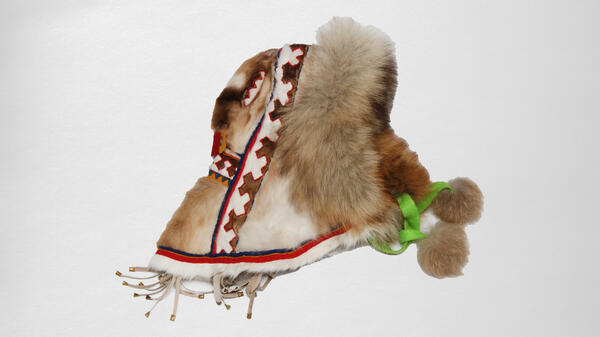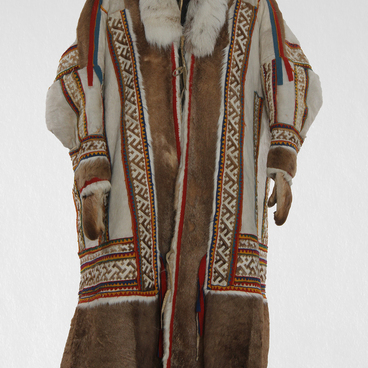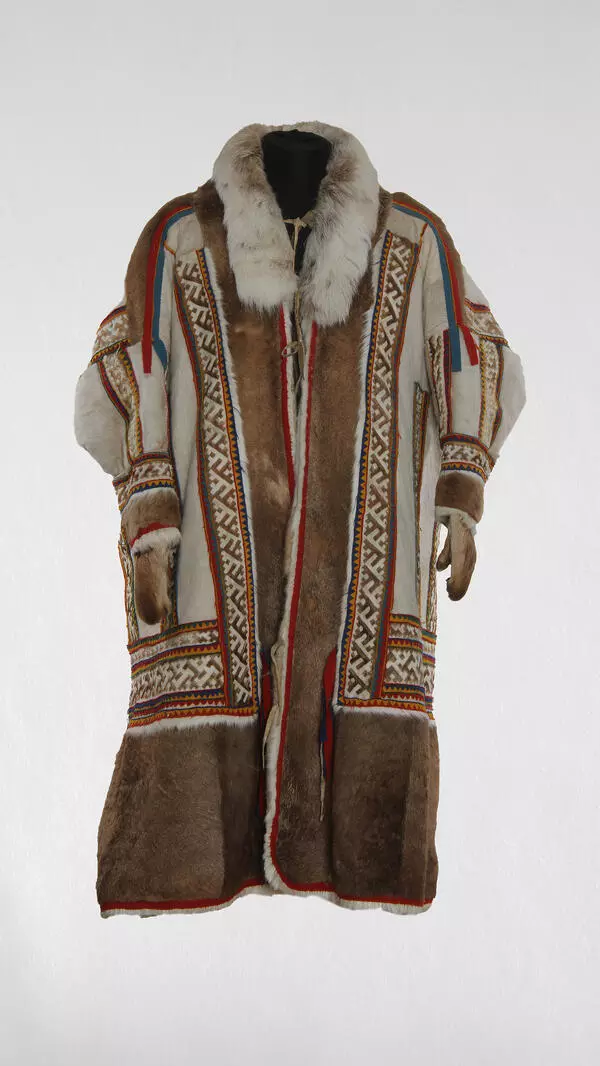The main raw material for the clothing of the indigenous small peoples of the North was reindeer skins. The outerwear, hats and shoes were sewn so that the peculiarities of the structure of the skin and hair of this ungulate would be taken into account.
The reindeer tolerates severe frosts very well. Each hair of his fur is a tube that contains air. The hairs adhere tightly to one another and create strong thermal insulation. From such skins, you can sew clothes with fur both outward and inward.
The human body feels the heat from reindeer fur even at moments when a small condensation accumulates from temperature changes. The micropores of the wool absorb this moisture and easily part with it when drying. Thus, a thing made of reindeer fur, with proper care, does not deteriorate and serves for a long time.
When Nenets women prepared and cut the material in order to sew hats, outerwear or other products from it, for example, the bags or the nukes to cover the chum, the skins were selected so that the pile was always directed downward. On such a pile, the drops of rain and wet snow rolled down, and the skin did not rot.
In cold climate, it was impossible to survive without a hat. The material and shape of the headdresses of the northern peoples were adapted to the harsh climatic conditions and nomadic life. Women sewed hats soft, light, and warm, spacious enough. These hats were comfortable both when riding reindeer and during other activities related to the nomadic way of life — guarding the herd and hunting.
Baby’s clothing in most cases did not differ from that of an adult. This can be also applied to the fur hat that the mother or grandmother sewed for the baby.
The child’s fur hat was part of the malitsa fur coat. The hat was sewn like a hood, or a separate hood covering the head from all sides. For the child’s fur hat, the soft skin from the forehead of a deer was used. It had the natural outlines of the eye sockets, holes from the horns and ears left. These parts were decorated with ornaments, contrasting stripes of fur or bright cloth. Thus, in clothes, the connection between a person and an animal was emphasized since the animal helped people to survive in the conditions of the Arctic tundra.
The reindeer tolerates severe frosts very well. Each hair of his fur is a tube that contains air. The hairs adhere tightly to one another and create strong thermal insulation. From such skins, you can sew clothes with fur both outward and inward.
The human body feels the heat from reindeer fur even at moments when a small condensation accumulates from temperature changes. The micropores of the wool absorb this moisture and easily part with it when drying. Thus, a thing made of reindeer fur, with proper care, does not deteriorate and serves for a long time.
When Nenets women prepared and cut the material in order to sew hats, outerwear or other products from it, for example, the bags or the nukes to cover the chum, the skins were selected so that the pile was always directed downward. On such a pile, the drops of rain and wet snow rolled down, and the skin did not rot.
In cold climate, it was impossible to survive without a hat. The material and shape of the headdresses of the northern peoples were adapted to the harsh climatic conditions and nomadic life. Women sewed hats soft, light, and warm, spacious enough. These hats were comfortable both when riding reindeer and during other activities related to the nomadic way of life — guarding the herd and hunting.
Baby’s clothing in most cases did not differ from that of an adult. This can be also applied to the fur hat that the mother or grandmother sewed for the baby.
The child’s fur hat was part of the malitsa fur coat. The hat was sewn like a hood, or a separate hood covering the head from all sides. For the child’s fur hat, the soft skin from the forehead of a deer was used. It had the natural outlines of the eye sockets, holes from the horns and ears left. These parts were decorated with ornaments, contrasting stripes of fur or bright cloth. Thus, in clothes, the connection between a person and an animal was emphasized since the animal helped people to survive in the conditions of the Arctic tundra.








